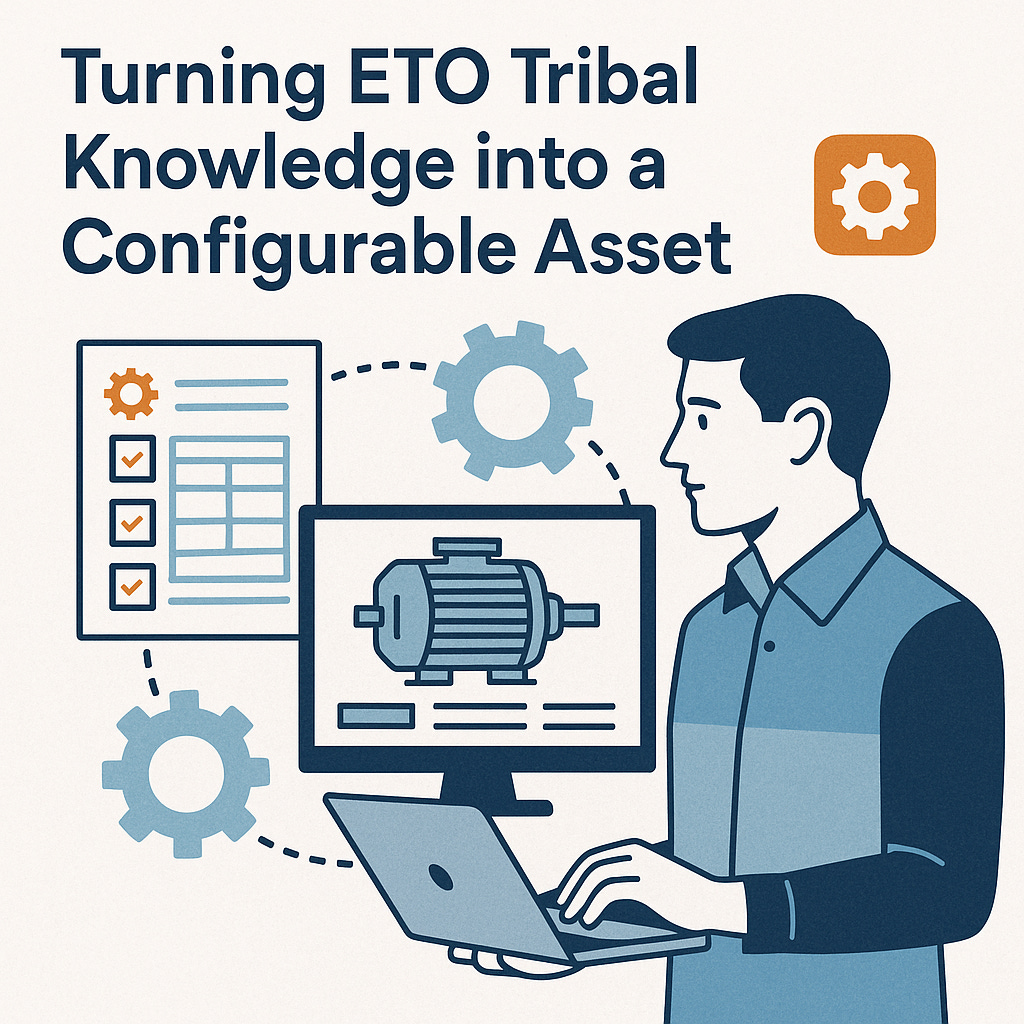Turning ETO Tribal Knowledge into a Configurable Asset
Engineer to Order (ETO) companies run on expertise. Every estimate, design, and routing decision depends on someone who remembers how a similar job was handled in the past. That expertise is valuable, but it is also fragile. When tribal knowledge stays in people’s heads, an ETO business becomes difficult to scale, slow to train, and inconsistent in execution.
There is another way to look at this problem. Instead of trying to preserve tribal knowledge for its own sake, you can transform it into a reusable and configurable asset. Once that happens, engineering effort is focused where it truly matters and the rest of the business becomes more predictable.
The Reinvent the Wheel Problem
Most ETO organizations unintentionally often rebuild the same (or similar) solutions. Engineers recall old projects from memory instead of working from a consistent library of rules or patterns. The result is long quoting cycles, poor margin visibility, and repeated engineering hours spent on work that should be routine.
Tribal knowledge creates bottlenecks. If only one senior engineer knows a specific constraint or workaround, every similar order must wait in their queue. Lead times stretch and stress builds across sales, engineering, and operations. As long as knowledge stays tribal, these problems repeat project after project.
A Different Approach: Make Knowledge Configurable
The most scalable ETO companies treat tribal knowledge as raw material. They translate what their experts know into systems that can guide less experienced team members. The goal is not to eliminate engineering judgment. The goal is to automate everything that does not require new thinking.
You can start by capturing recurring patterns. What dimensions tend to drive cost? What combinations of materials cause issues? What options require special tooling? Once these rules are documented, they can be added to a configurator, a rules engine, or a structured template library inside your system of record.
This shift builds a foundation that supports more reliable quoting and more consistent early engineering decisions. A salesperson or project engineer can answer most of the routine questions with confidence because the expertise is already embedded in the system instead of buried in notebooks or memories.
Auto Generating the First 80 Percent
When tribal knowledge is converted into rules, something powerful becomes possible. The system can automatically generate the starting point for new projects. Early BOMs, routings, and design constraints can be created based on what the organization already knows works well.
This does not eliminate engineering involvement. It reduces time wasted on repeatable decisions, which frees senior engineers to focus on true edge cases and innovation. The result is faster quote turnaround, better accuracy, and fewer late surprises during manufacturing.
Continuous Improvement Becomes Easier
Once knowledge is digitized, it can be refined over time. Feedback from past jobs, field issues, NCRs, and margin reports can all loop back into the rules. You can see which configurations consistently overrun hours and which design choices create downstream delays. Updating the rule set or configurator becomes a structured process instead of an informal conversation.
This continuous improvement cycle creates a competitive advantage. Every project not only delivers value to the customer but also strengthens the digital knowledge base that supports future work.
The Vision: ETO That Scales
Transforming tribal knowledge into a configurable asset turns an ETO business into a scalable one. New employees come up to speed faster. Senior engineers spend more time on high impact work. Sales can quote accurately without waiting for experts. Manufacturing sees fewer surprises and fewer changes.
In other words, the business stops relying on heroics and starts relying on systems.
Digitizing tribal knowledge is not just an efficiency project. It is a strategic shift in how an ETO organization thinks about expertise and growth. Companies that make this transition position themselves to behave more like mass customizers, with the flexibility of custom engineering and the consistency of a repeatable process.


